Ukraine’s U.S.-supplied M1A1 Abrams tanks are getting new production-standard anti-drone armor screens, also commonly known as “cope cages,” on their turrets. Pictures of one of the modified Abrams show it has also received additional explosive reactive armor (ERA), modifications that have also been appearing elsewhere in the field.
This all comes roughly a month after U.S. officials reportedly said Ukrainian forces had pulled the M1A1s from the front lines, particularly due to concerns about their vulnerability to first-person view (FPV) kamikaze drones and other uncrewed aerial threats. The extent to which Ukraine’s Abrams tanks have returned to service since then is unclear, but they may well be back in action.
Ukraine-headquartered Metinvest Group, a steel and mining conglomerate, put out a press release about the new armor screens earlier today. The company said that it is also making factory-standard anti-drone armor for Soviet-designed T-64 and T-72 families of tanks (which include the T-80 and T-90 series, respectively), but only showed an example of the design for the Abrams. This is a part of the firm’s broader “Steel Front” wartime production initiative, which has also been churning out pre-fabricated protected shelters, body armor, and other kinds of materiel for the Ukrainian armed forces.
“After a long and thorough procedure of testing and testing, steel screens began to be supplied to the Armed Forces free of charge,” according to a machine translation of the release. “So far, more than 25 additional protection systems have been manufactured and delivered, seven of which are for M1 Abrams tanks.”
“All drawings of protective screens were made taking into account the specifics of the design features of each type of tank, because additional structures should not only protect against external threats, but at the same time not limit the functionality of the equipment itself, not complicate its operation in combat conditions, not interfere with the fighters,” the press release adds. “The total weight of the screen structure is up to 430 kg [approximately 948 pounds].”
From the pictures Metinvest has released of the Abrams equipped with the screen, the array is extensive with a main screen on top of the turret and others around the front, sides, and rear. Some images show an additional screen attached to the rear of the hull.
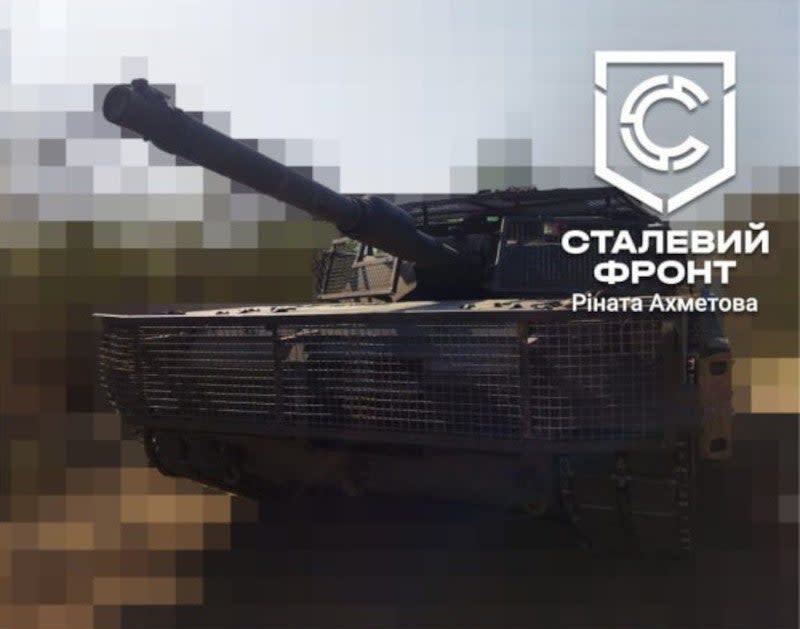
The full configuration looks to have additional angled sections that close the gaps between the top and the side panels. Very small gaps are left open for the Abrams’ side-mounted launchers that are used to fire smoke grenades to help conceal the tank. It is worth noting that FPV drone operators have been proven very adept at using available gaps, even small ones, in armor screens and other defenses to slip in and make attacks.


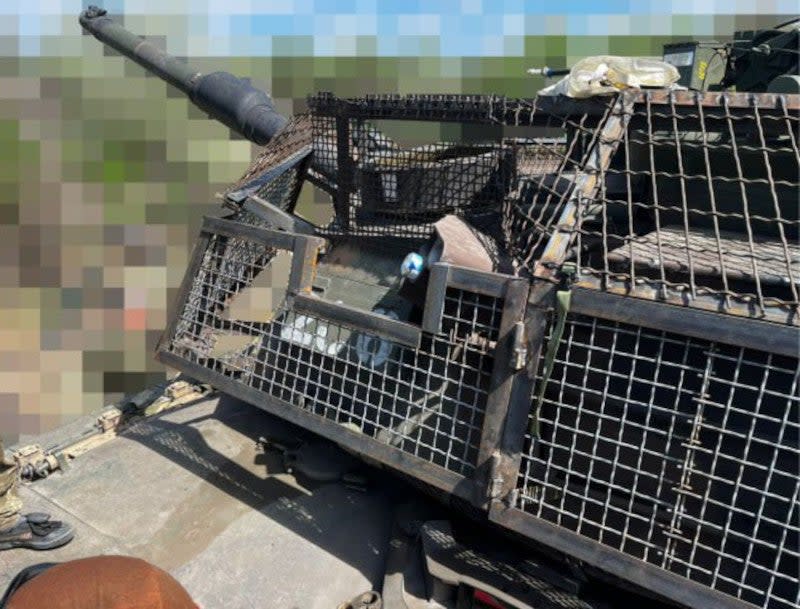
There is definitely a folding panel on top that helps seal the gap over the loader’s hatch, but that still allows relatively ready ingress and egress. The commander’s hatch has a raised armored structure around it with various windows, but is still open-topped and it is unclear if it can be covered if desired. The are also what may be hinged sections over the blowout panels on top of the rear of the Abrams turret where the ammunition is stored. These offer a way to vent the force of an ammunition explosion, such as one caused by a hit to the tank that causes the rounds to detonate, up and away from the crew.
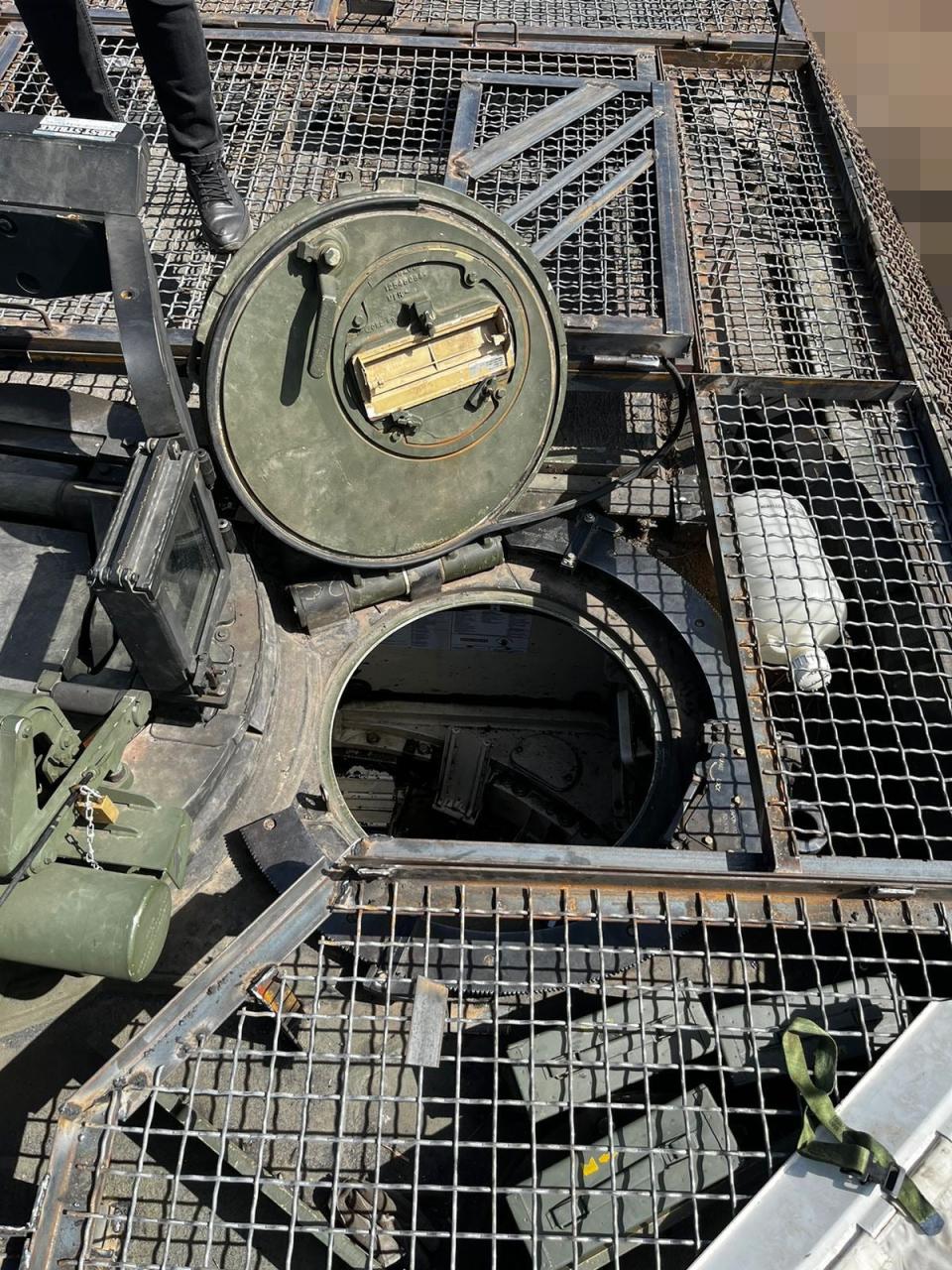
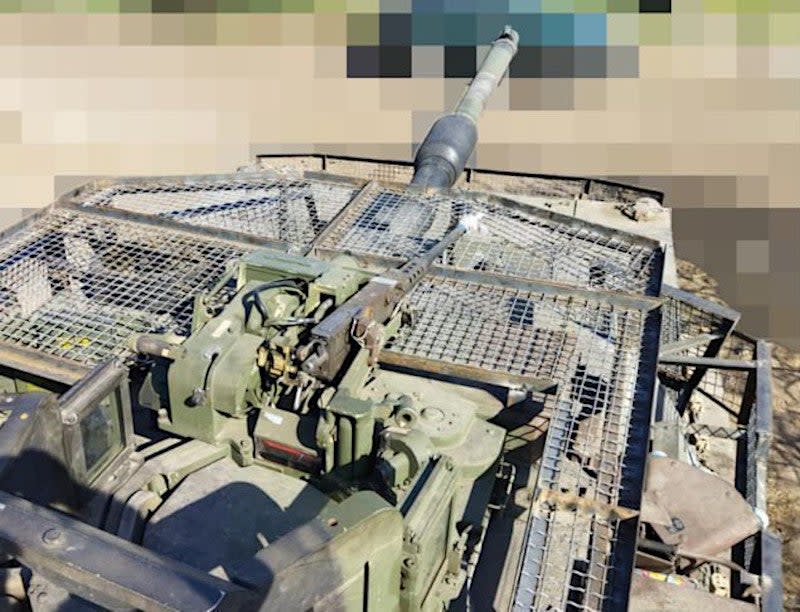
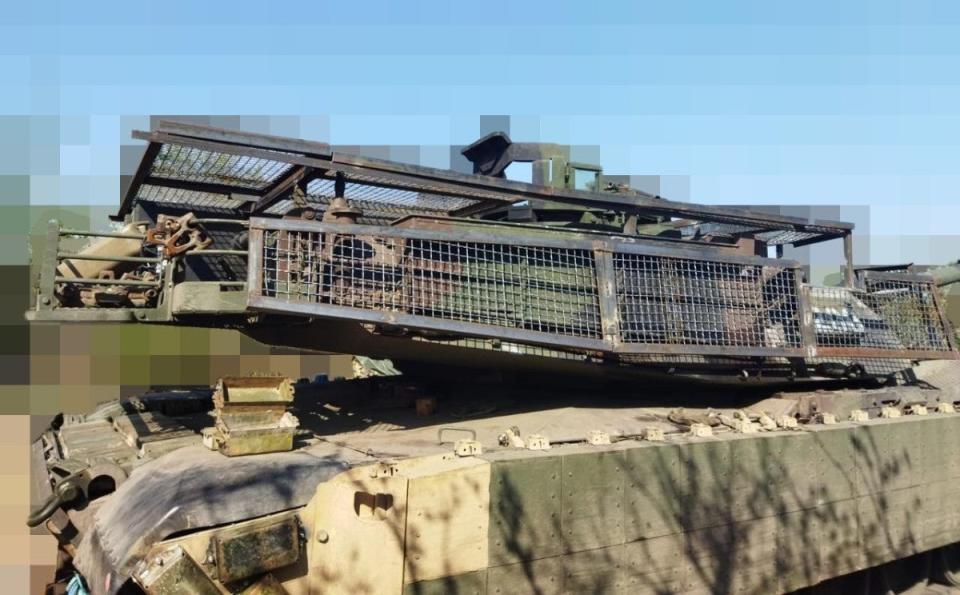
“Together with military engineers, we analyzed the areas of military equipment typical for damage by FPV drones, vulnerable places that need to be protected, and developed additional protection structures,” Oleksandr Myronenko, Metinvest’s Operational Director, said in a statement in the release. “Anti-drone steel screens help not only to protect expensive equipment from damage by the enemy, but also protect the lives of Ukrainian servicemen.”
The Abrams with the new anti-drone screen has additional explosive reactive armor (ERA) on top of its arrays of U.S.-standard M19 Abrams Reactive Armor Tiles (ARAT) along the sides of the hull. Four Soviet-designed Kontakt-1 ERA tiles had been added to the fronts of both sides of the hull. Whole arrays have been added to the top and underside of the front of the hull.
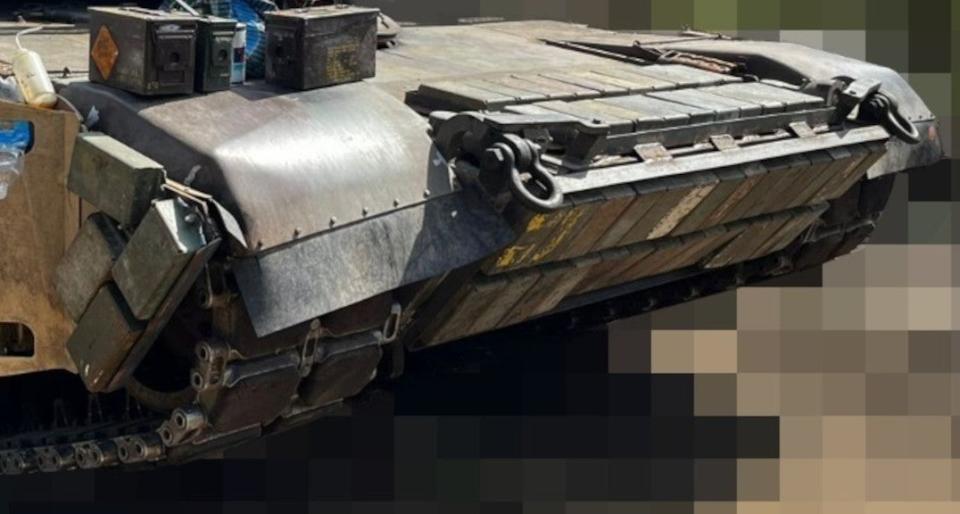
What looks to be the first pictures of a Ukrainian M1A1 with the front hull Kontakt-1 arrays emerged earlier this week.
A video showing a knocked-out Abrams in Ukraine with M19 tiles fitted to the sides of the turret, something that is not part of the U.S.-standard fit, also appeared on social media just days ago.
As Metinvest’s press release today makes clear, the main purpose of the new and elaborate factory-made cope cage for the Abrams is to help protect these high-value tanks against FPV kamikaze drones. Highly maneuverable and carrying warheads that detonate on contact, armed uncrewed aerial vehicles of this type have become a near-constant scourge on both sides of the battlefield in Ukraine. FPV types, in particular, are now talked about as being on par with artillery in terms of battlefield significance. Russia has also steadily challenged Ukraine’s initial dominance in this field, as well.
As a result, the conflict in Ukraine continues to see an extremely fast innovation cycle when it comes to the development of new drone capabilities, as well as countermeasures like ever more complicated cope cages. Counters in turn to new countermeasures have also been quick to emerge. For instance, after both Ukrainian and Russian vehicles really began sporting anti-drone electronic warfare systems, what appeared to be a wire-guided drone that looked designed to be immune to radio frequency jamming emerged on the battlefield in Ukraine.
The array of Russian ‘turtle tanks’ with large shed-like armor structures fitted on top and various other defensive features that have emerged in Ukraine over the past two months or so are another prime example of this cycle. The core design of the turtle tanks looks to be heavily centered on protecting against FPV kamikaze drones, especially while breaching through minefields and other fortified lines, and some of them have been getting extra ERA recently, too.
ERA, in general, is intended to help defeat anti-tank guided missiles (ATGM), various kinds of infantry anti-armor weapons like rocket-propelled grenades, and certain types of tank shells depending on the design of the tiles. However, it would make sense that they are now also helping to shield against drone attacks. Some of the most common warheads used on FPV-type drones are PG-7-series ones originally designed to be fired from RPG-7 rocket-propelled grenade launchers.
The particular need to find a new mix of protective features for M1A1s in Ukrainian service also makes sense given reports in April that the tanks had been pulled from the front lines in part because of concerns about their vulnerability to drones. At that time, it had been visually documented that Ukraine had lost five of its 31 Abrams.
At the time of writing, at least eight have now been confirmed visually to have been destroyed, damaged, or abandoned. Two of Ukraine’s Abrams-based M1150 Assault Breacher Vehicles are also known to have been destroyed in the fighting so far.
In addition to the practical operational impacts of these losses, they have also been major propaganda victories for Russia. Getting the vehicles back to the front lines, but also with more protection to try to mitigate the clear threats they face would have been an imperative in the last month or so.
Regardless, beyond Ukraine, layers of active and passive defenses look set to increasingly be the norm for protection tanks and other heavy armored vehicles against the very real threats that drones pose. The War Zone highlighted this reality in a feature earlier this year that laid out a detailed case for leveraging hard-kill active protection systems as a way to quickly provide additional vehicular anti-drone defenses.
If nothing else, the new defensive additions for Ukraine’s Abrams show how fast modifications have been made to these top-end Western main battle tanks, even using soviet components, to help keep them relevant on the battlefield.
Contact the author: [email protected]
Source Agencies


